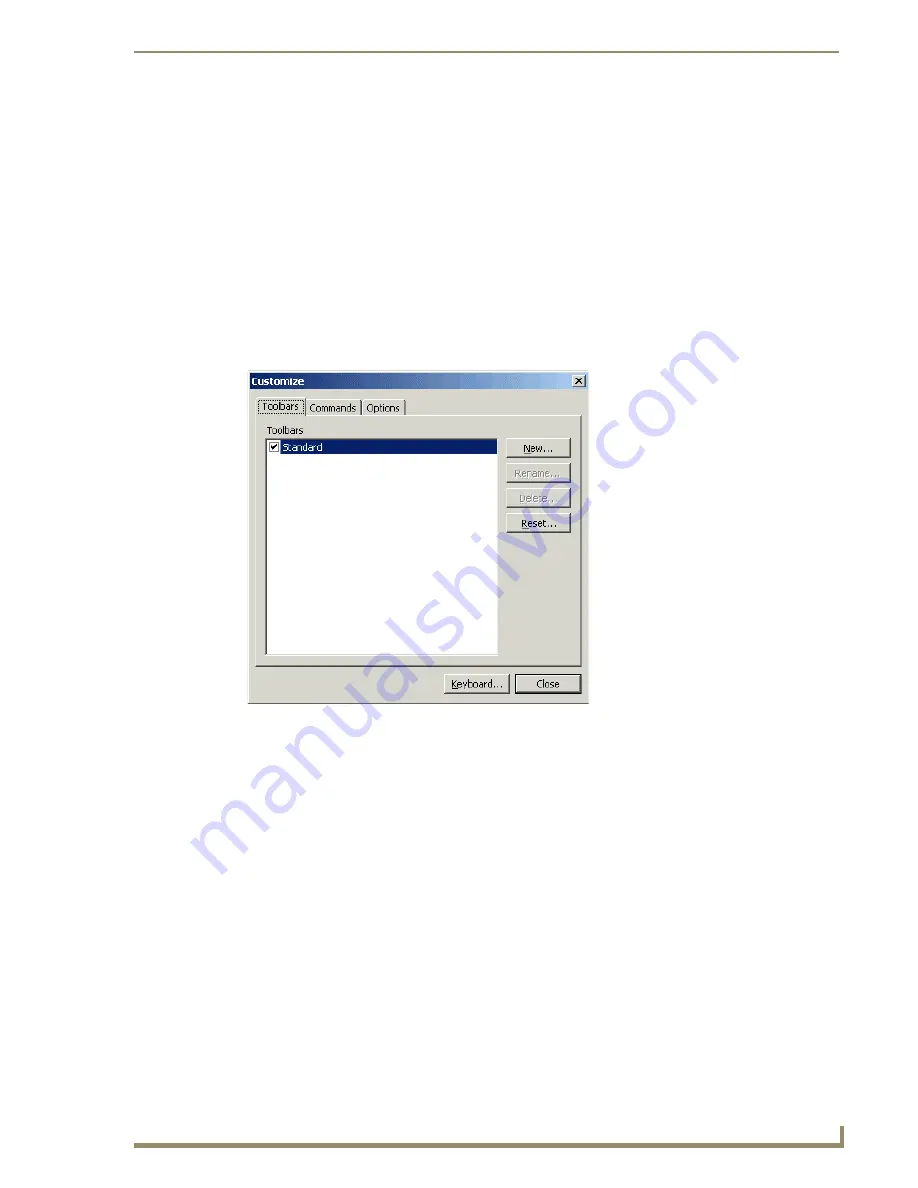
Setting Program Preferences
47
IREdit IR Library Management
Setting Program Preferences
Customizing The Toolbars
You can customize the toolbar by right-clicking on the standard toolbar area and selecting Customize from the
Customize context menu. The three tabs available in the Customize dialog are:
Toolbars Tab
Commands Tab
Options Tab
Toolbars Tab
The Toolbars Tab of the Customize dialog allows you to create a new toolbar populated with commonly used
tasks. You can control which toolbars are visible in addition to managing them.
To access the Customize dialog right-click anywhere on the standard toolbar area to open the customize
context menu. Select the Customize option. Use the options in this dialog to create and manage toolbar
properties.
Select
New
to initiate a new toolbar which will then prompt you to name it. After that you can
designate the functions to be found on the toolbar.
Select
Rename
to change the name of your customized toolbar. The standard toolbar cannot be
renamed.
Select
Delete
to delete custom toolbars. The standard toolbar cannot be deleted.
Reset
will return selected toolbars to default settings.
Click the
Keyboard
command button to customize your own quick key strokes for commonly used functions.
Commands Tab
Functions for populating the toolbars are located on the Commands Tab of the Customize dialog.
Right-click and select Customize from the Customize context menu to access this dialog.
You can toggle the view from All Commands, File (related functions), Unassigned (functions outside of Edit,
File and View), and View (functions related to the setup of the work area).
The related commands are located in the Commands window to the right of the Categories field. Selecting
Description when a command is highlighted will provide information for that particular function. If the
FIG. 67
Toolbars Tab within Customize Dialog




















